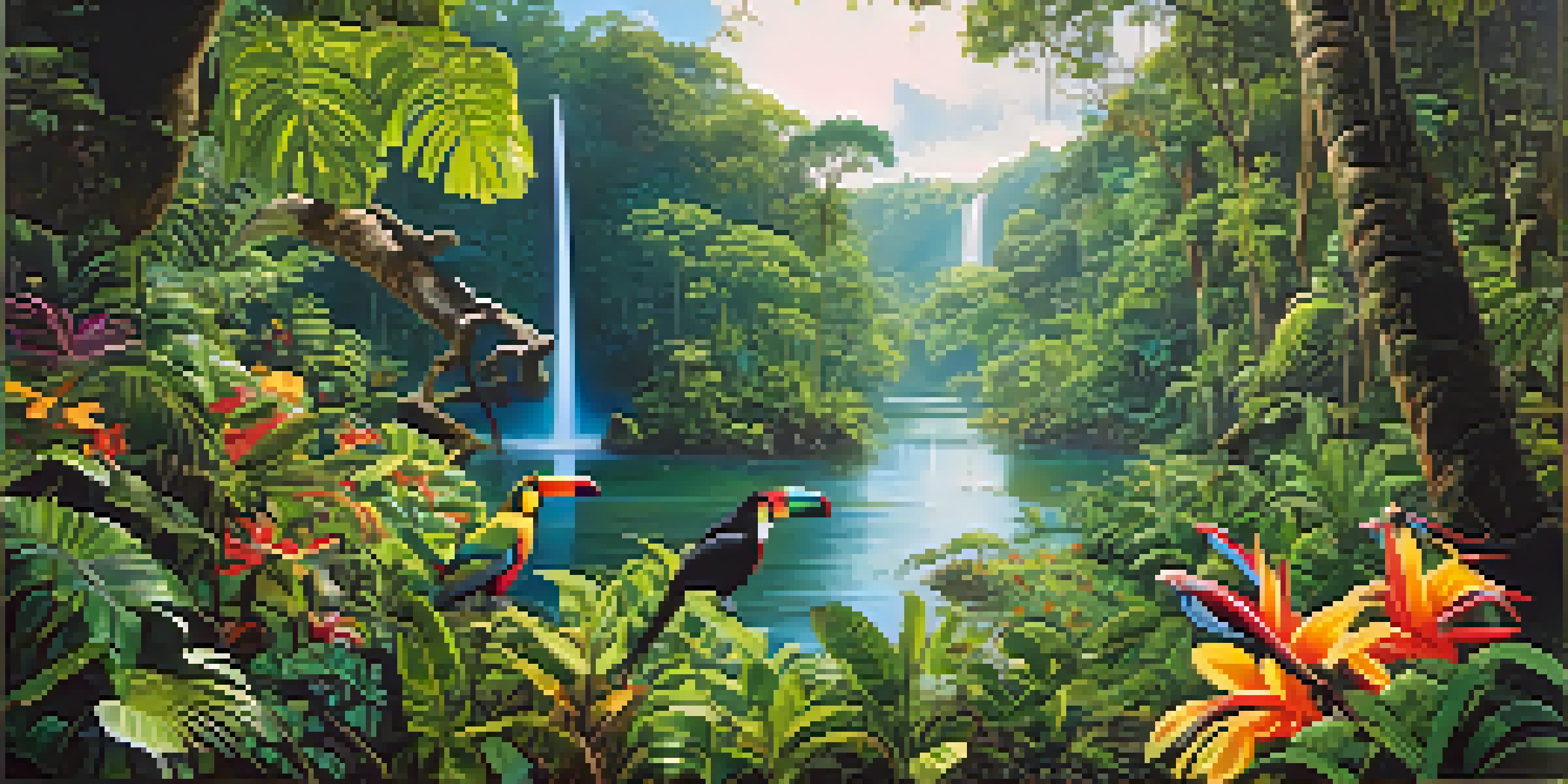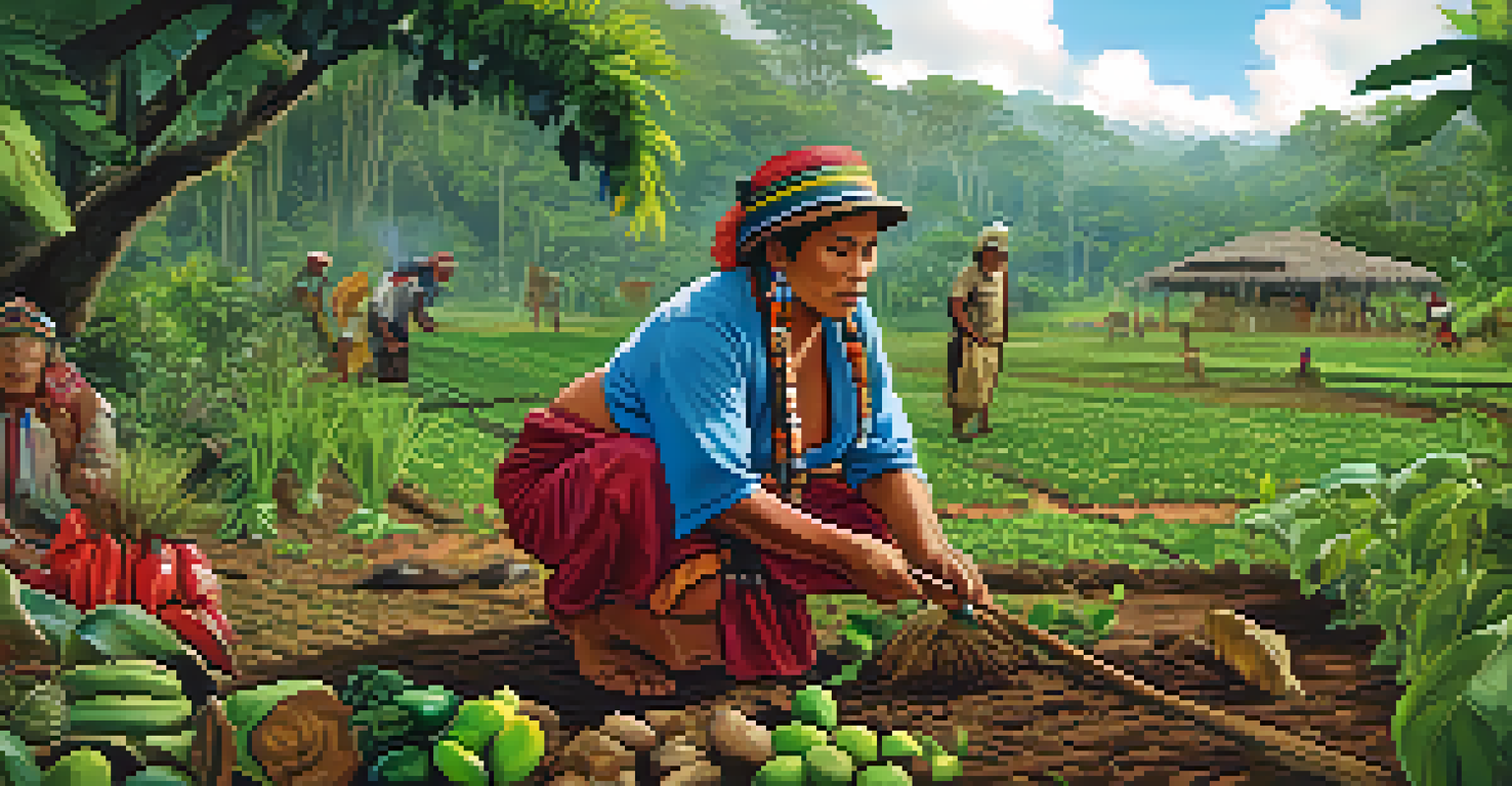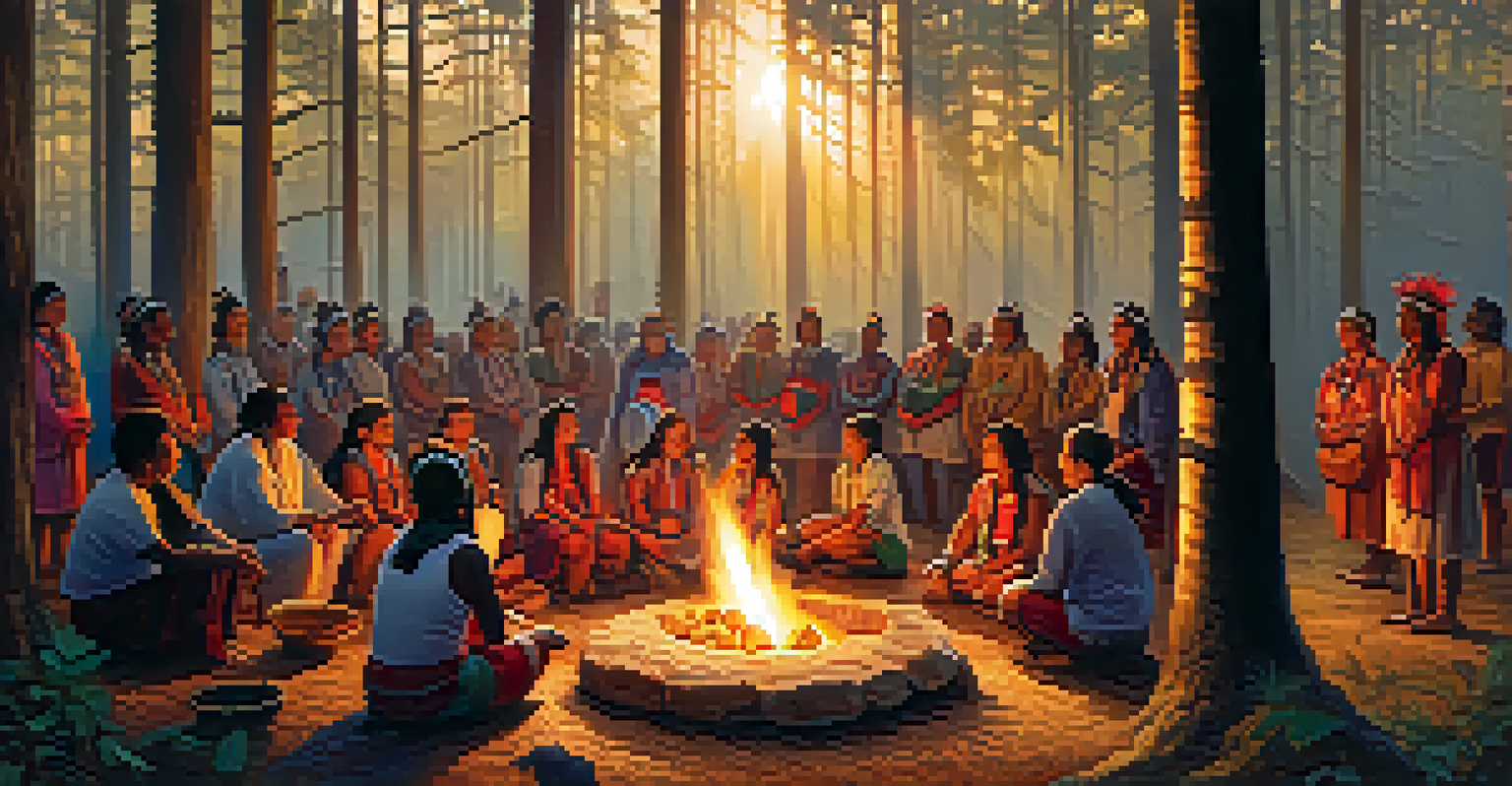Amazonian Indigenous Cultures: Guardians of Peru's Biodiversity

Understanding the Amazon: A Hub of Biodiversity
The Amazon rainforest is often referred to as the 'lungs of the Earth' due to its vast array of plant and animal life. It's home to more than 40,000 plant species, 2.5 million insect species, and countless other organisms. This incredible biodiversity plays a crucial role in regulating the global climate and supporting ecosystems worldwide.
The fate of the world’s ecosystems rests in the hands of Indigenous peoples, who have lived in harmony with nature for millennia.
Within this rich tapestry of life, the Amazonian Indigenous cultures have flourished for centuries, deeply intertwined with their environment. Their traditional knowledge and practices reflect a profound understanding of the ecosystem. By living in harmony with nature, these communities have developed sustainable ways to utilize the resources that surround them.
However, the Amazon faces significant threats from deforestation, mining, and climate change. As guardians of their ancestral lands, Indigenous groups are at the forefront of conservation efforts, ensuring that the biodiversity of the Amazon is preserved for future generations.
The Role of Indigenous Knowledge in Conservation
Indigenous knowledge encompasses generations of experience in managing natural resources sustainably. This knowledge includes understanding seasonal patterns, plant medicinal properties, and animal behaviors, which are vital for maintaining ecological balance. For example, the use of traditional agroforestry techniques helps preserve soil health and fosters biodiversity.

One compelling example is the practice of shifting cultivation, where communities rotate their crops to prevent soil depletion. This method allows for a rich variety of plants to thrive, ensuring food security while protecting the ecosystem. These practices have been honed over centuries and are now being recognized as essential to modern conservation strategies.
Indigenous Knowledge Aids Conservation
Indigenous communities possess valuable traditional knowledge that significantly enhances biodiversity conservation efforts.
By integrating Indigenous knowledge with scientific research, conservationists can develop more effective strategies for protecting biodiversity. This collaboration not only benefits the environment but also validates the expertise of Indigenous peoples, reinforcing their role as stewards of the land.
Cultural Traditions: A Deep Connection to Nature
For Amazonian Indigenous peoples, nature is not just a resource but a living entity that deserves respect and care. Their cultural traditions often reflect this reverence, with stories, rituals, and practices centered around the natural world. For instance, many tribes hold ceremonies to honor the spirits of the forest, reinforcing their commitment to conservation.
Indigenous knowledge is a treasure that can help restore balance to our ecosystems and ensure a sustainable future for all.
Art and music also play a vital role in expressing this connection. Traditional crafts often incorporate natural materials, showcasing the beauty of the Amazon's flora and fauna. These cultural expressions serve as a reminder of the importance of biodiversity in their daily lives and spiritual beliefs.
By preserving their cultural heritage, Indigenous peoples contribute to the overall health of the ecosystem. Their practices promote sustainable living, ensuring that natural resources are available for future generations.
Challenges Faced by Indigenous Communities
Despite their critical role in biodiversity conservation, Indigenous communities face numerous challenges. Land encroachment by logging, agriculture, and mining threatens their livelihoods and the ecosystems they protect. Many communities are fighting legal battles to reclaim their ancestral lands, often facing resistance from powerful corporations.
Moreover, climate change poses an existential threat, as shifting weather patterns disrupt traditional farming and fishing practices. The loss of biodiversity in the Amazon due to climate change can have dire consequences not just for the local communities, but for the planet as a whole.
Threats to Indigenous Rights Persist
Indigenous peoples face ongoing challenges from land encroachment and climate change, which threaten their livelihoods and the ecosystems they protect.
These challenges highlight the need for greater support and recognition of Indigenous rights. Empowering these communities through legal protections and resources can enhance their ability to safeguard biodiversity and adapt to environmental changes.
Success Stories: Indigenous-Led Conservation Initiatives
There are numerous inspiring examples of Indigenous-led conservation initiatives that highlight the effectiveness of their traditional practices. One notable case is the Asháninka people in Peru, who have successfully restored degraded areas of rainforest through sustainable agroforestry. Their efforts have not only enhanced biodiversity but also improved their food security.
Another example is the Kichwa community, which has developed eco-tourism ventures that promote sustainable practices while generating income. Visitors can experience the rich culture of the Kichwa and support conservation efforts, creating a win-win scenario for both the local economy and the environment.
These success stories demonstrate that when Indigenous communities are empowered to lead conservation efforts, they can effectively protect biodiversity while simultaneously preserving their cultural heritage.
The Importance of Legal Recognition for Indigenous Rights
Legal recognition of Indigenous land rights is crucial for effective biodiversity conservation. When communities have secure land tenure, they are more likely to invest in sustainable practices and protect their environment. Unfortunately, many Indigenous groups still lack legal recognition, leaving them vulnerable to exploitation and environmental degradation.
International frameworks such as the United Nations Declaration on the Rights of Indigenous Peoples advocate for the protection of these rights. By aligning conservation efforts with Indigenous land rights, governments and organizations can foster more effective and equitable conservation strategies.
Collaboration is Key for the Amazon
Effective conservation of the Amazon requires collaboration between Indigenous communities, scientists, and conservation organizations to integrate traditional practices with modern strategies.
Empowering Indigenous peoples through legal recognition not only protects biodiversity but also promotes social justice, ensuring that their voices are heard in decision-making processes that affect their lands and lives.
The Future: Collaboration for a Sustainable Amazon
Looking ahead, the collaboration between Indigenous communities, scientists, and conservation organizations is essential for safeguarding the Amazon's biodiversity. By valuing and integrating Indigenous knowledge with modern science, we can develop holistic conservation strategies that benefit both the environment and local communities.
Engaging Indigenous peoples in policy-making processes ensures that their voices are heard and respected. This collaborative approach can lead to innovative solutions that address the pressing challenges facing the Amazon while promoting sustainable development.

Ultimately, the future of the Amazon depends on recognizing the invaluable contributions of Indigenous cultures. By working together, we can protect this vital ecosystem for generations to come.